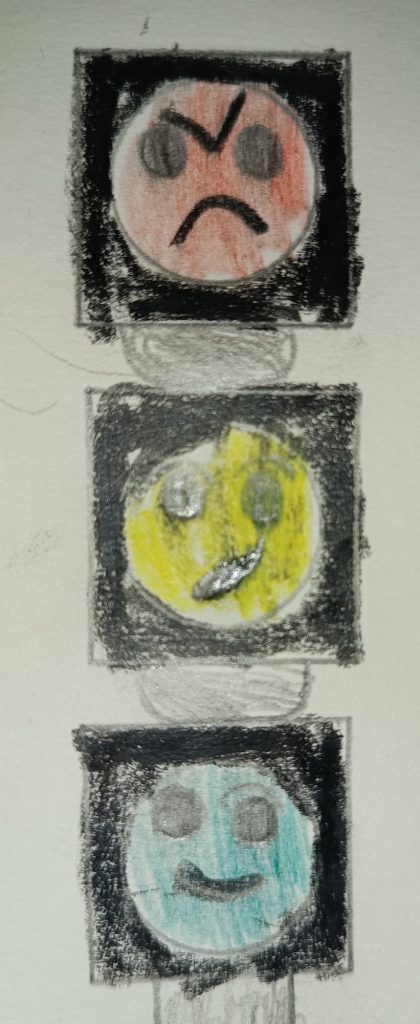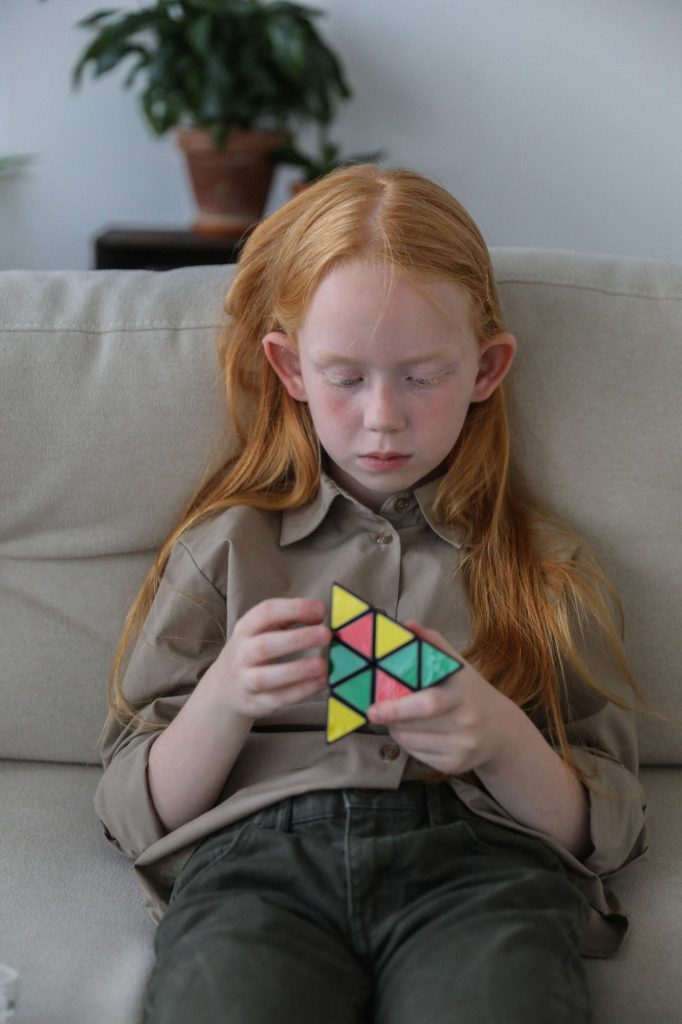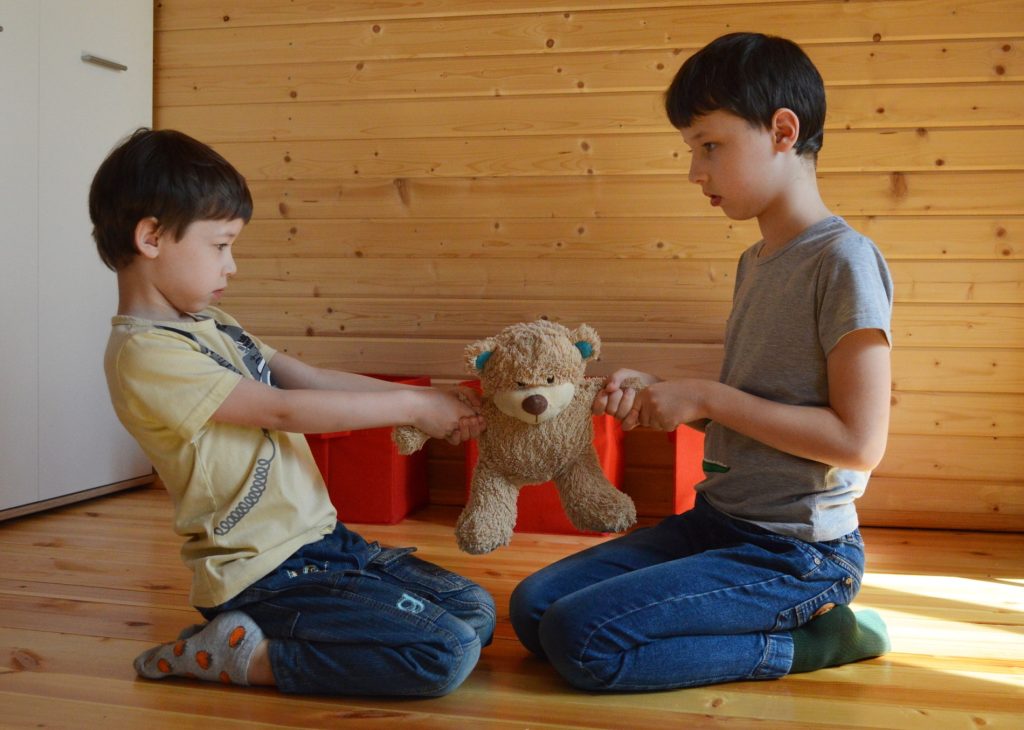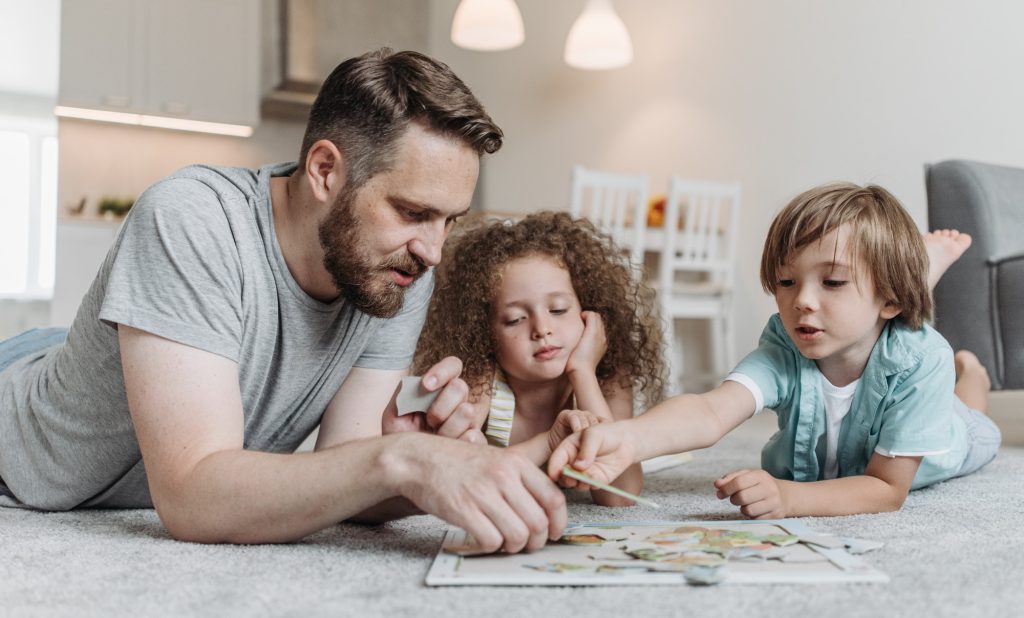How to Teach Kids to Handle Conflict
No one likes to deal with disagreements, conflicts, and stressful situations. Arguments, fights, and disagreements happen all the time, no matter how hard we try to avoid them. This is true for both adults and kids. Not dealing with problems when they come up can hurt relationships and cause more issues with loved ones and other people in the future.
Conflict isn’t fun, but it doesn’t have to feel like the end of the world. Teaching kids how to deal with conflict in a healthy way will help them deal with everything from small fights (“He took my toy!”) to big ones (“I don’t know if I want to have anything with you anymore”) as they get older.
Identification of emotions.
Part of what makes conflicts hard to handle is that they bring up big, intense feelings that children may not have the tools and knowledge to deal with.
Before kids can deal with the problem that ignited the fight, they need to learn how to calm down emotionally enough to think before they act or say something they might regret later.
Parents can start by helping their kids figure out how they feel by asking the following questions:
Are they feeling mad? Frustrated? Hurt? Embarrassed? Betrayed? Incompetent? Insufficient? Abandoned?
Visual feelings:
Showing “Visual feelings” is when the kids use pencils, pictures, or magnets to identify how they feel, so they can visually express themselves. They don’t need to say anything but can show you how they feel.

The next step is to keep track of this, so you can easily follow your kids’ emotions daily. By doing this, a parent can be fully aware of persistent negative feelings for an extended period and act timely and accordingly.
Solving problems in time and together will make your child feel safe and heard, and the problem/s will not escalate.
The stoplight technique: Red, Yellow, Green
Explaining to the kids the meaning of the colors on the stop light is quite easy. It is accepted worldwide, and the colors are understandable from a young age.
Draw it together and stick it to the refrigerator or some other visible and suitable spot. This is very important if you have little kids, as the presence of the drawing will always be visible to them, so they can use it to show their feelings. For the parents, this is important so they can immediately see if the kid stands in front of the stoplight and follow what will be the color they show.

Red – danger, stop, do not proceed.
If a child is pointing to the red light, it means that the feelings are so big that they are not ready and can’t act in a way to resolve the conflict.
Yellow – caution, be prepared, almost there, patience.
Yellow is a midpoint, as it can mean that the emotions are beginning to subside, and reaching the green is just a matter of time. As well, yellow can mean that things are escalating and that something is triggering strong emotions. This way, the child is signaling for the parent to pay attention.
Green – ready, proceed, safe zone, happy to move on.
Green is a safe zone and readiness to accept the facts and consequences. Green means “I am ready to engage and solve this conflict or issue.”
If you wish to improve this, you can add numbers next to the stoplight. From 1 to 5. The child can use them to show you how each color/emotion is intense. Very useful to have if the child is upset and shows red and yellow colors.
Useful advice:
When feelings are still high, it’s not a good time to figure out how to solve the conflict. Help kids develop a set of skills they can use when they need to calm down. It can be anything the child is comfortable with: taking a few deep breaths, cuddling a toy, or listening to a favorite song.

Find out what ignited the conflict situation.
After strong feelings have calmed down, the next step is to figure out what actually caused them. As you will find out, as a parent, the kids often don’t know how to pinpoint and explain the exact source of their frustration or problem. The younger the child is, the more often this situation occurs. In these situations, they will need your help.
Valuable tips for solving children’s problems:
Suppose your child and their friend are suddenly angrily fighting over a toy or anything other. In that case, it can be a sign of a much bigger problem that is worth investigating. One might have a new friend, and the other might have a jealous attack or feel left behind.

First: Don’t always look for superficial reasons and usually “shake hands and be best friends again,” as that will solve nothing, nor will you, as a parent, be aware of the deeper problem that will escalate again. This is very tough for busy parents who are always trying to solve the problem as soon as possible. They are always trying to solve the problem as quickly as possible so they can focus on the next thing. Be patient and investigate.
Second: Your kid might be full of emotions at that moment and unable to articulate the main cause of conflict, even less how to deal with it. With that in mind, we, the parents, need to pay more attention to the details and talk to our children later when they cool down.
Many of us think we did a good deed for today and then forget about it all along. We did not. We have just postponed the next conflict. Again, be patient and talk to our children. Help them figure out what is the real problem and how to fix it.
Once my child is aware that I am paying attention, listening, and helping him how to solve the problem, he will come back to me again for the support.
With this in place, I am not just solving that particular problem; I am building a foundation of our relationship of mutual understanding and support. Older kids and teenagers will be fully aware of this and will come to us when they have problems. As the children grow, they will build up their language skills to easier articulate the source of the problem they are struggling with. They will rely on us for guidance, and we should take that seriously.
If we are good parents, we should be, in these situations, very proud. Both on our child and us, as this bond, if cherished, will last for a lifetime.
Think of ways to fix things
Once kids know what’s going on, you can help them practice coming up with answers and solutions. The help of an adult is essential for younger kids. Still, even older kids and teens can benefit from having someone to discuss the ideas, solutions, and options they come up with.
Through this process, you can together crystalize a few options (all the good ones), but the kids should be the ones who decide which one to pick. By following this, you will teach kids to be open to listening to advice, make their own decisions, and be responsible for them.
One to five problem-solving action plan.
You can practice activities that help your kids build up a process of thinking action plans to tackle the problems and evaluate possible results.
I call it a “One to five problem-solving action plan.”
One
Questions that should be said aloud: What is wrong? How did this problem start?
Two:
Questions: What can I do about this? What options can I think about to solve this problem?
Three:
Processing: Pick the best option your child comes up with.
Four:
Questions: Am I safe with this option? Why is this the best choice I have? Is this taking me closer to solving this problem or at least getting closer?
Five:
Take action and follow the choice.
Once the action is taken, you should together reevaluate the results compared to the expectation and fine-tune the next step if the action taken has not provided the desired effect and solutions to the problem.
A valuable tip to help your kids build up a process of thinking to tackle the problems:
Tell your children that the goal is to try their best, not to get everything right away and on the first attempt. They may have to try again if their first plan doesn’t work. Let them know that this is often just part of the process.
Praise your child for trying and practicing new skills, even if they didn’t work out the way they had hoped.
Give your kids credit, and then help them figure out what to do next.
Once the goal is achieved and the problem is solved, make a big deal of it. Make a celebration.
Different perspective:
People often feel like conflicts are huge and stress them completely, making it hard to keep things in perspective.
Kids should practice taking a step back in their minds to help them find good answers. To help children learn how to see things from a broader perspective when in conflict, you can give them a few useful tips to keep in mind:
Don’t just think about this one thing. Think beyond.
It is ok to feel upset if a close friend tells a secret, you told them to keep for themselves. But does that really mean you’re no longer friends? That the friendship is ruined forever?
Encourage your child to think about the whole relationship with the person they’re fighting with, not just that one thing that just happened. Remind them that one action doesn’t define the entire person. Everyone makes mistakes. Is this one so bad they can’t forgive and is it done intentionally or accidentally?

Think about how the other person feels.
To help resolve conflicts, it is essential to try to understand the other person’s perspective. You don’t need to agree with them, but try to listen without interrupting what they have to say and imagine how they might feel.
Kids can learn empathy by trying to picture what the other person is going through.
Depending on the situation, it makes sense for your child to talk to the other person about the problem and be sure to listen and hear the reasons behind it. By practicing these skills, kids can learn to solve conflicts quickly and become more understanding.
Think about the context.
How kids deal with a conflict often depends on where and when it happens and how they feel about the other person. Another layer might be the age of the person they are confronting: a younger kid, same age, older and stronger kid, parent, older person, or a teacher.
For example:
If the opposing party is younger, the kid might be tempted to deal with it quickly and without consideration for what is right simply to enforce their position.
With someone of the same age, they might say something without considering what consequences these words might bring and how much they can hurt.
While with the teacher, they will need to wait until the opportunity comes to talk privately so they don’t suffer the consequences. Parents should consider these situations, explain what is right and wrong, and how to develop a sense of justice and empathy.
It is always essential to take a step back and consider all the factors involved to help the child handle the conflicts more effectively and successfully. This will help children to establish good friendships and be socially desirable.
Conclusion
Disagreements among children are common and necessary for their growth. You may assist them in learning how to manage conflict situations constructively and healthily by teaching them effective conflict-resolution techniques by following these eight practical examples.

Seven practical examples for teaching kids how to deal with conflict:
1. Develop good conversational skills.
Kids need to learn how to express their emotions without yelling or accusing one another for a dispute to cease. It’s challenging to develop communication skills while tensions are high. Because of this, it’s essential to practice this ability in controlled, low-stress environments.
2. Use “I” phrases to describe your needs and feelings.
It is typically more helpful to say something like, “I was deeply upset when you said that about me to the others,” rather than starting a conflict by stating, “You said that to the others intentionally just to harm me!”
3. Encourage kids to verbalize or write about their emotions.
Giving children a chance to communicate their needs and feelings is crucial. Instead of placing blame or making negative remarks about others, encourage children to utilize “I” words like “I feel frustrated when you do something like that without talking to me first.”
4. Develop potential solutions to the issues in advance.
Help children develop their ability to solve problems by having them discuss ideas, create an action plan, and carry it out. Teaching kids how to resolve disputes on their own will give them a sense of empowerment.
5. Role-playing.
Children may learn conflict resolution skills through role-playing, which is both enjoyable and effective. Encourage children to role-play various circumstances as they jointly decide on the best course of action.
Encourage children to strive to comprehend and take into account the sentiments of others. This will help them overcome disagreements.

6. Establish limits and consequences:
Establish clear boundaries and sanctions for unacceptable behavior. Punching or calling others names should not be tolerated. This can teach children to respect others and settle disputes amicably as that is in their interest.
7. Imitation.
Show your kids how you would act in these circumstances. Let them follow suit or come up with their own responses. Encourage them to alter what you did and include their ideas.
Remember:
Disagreements among children are common and necessary for their growth and mental development. You may teach them how to manage conflict situations constructively and healthier by teaching them effective conflict-resolution techniques.
